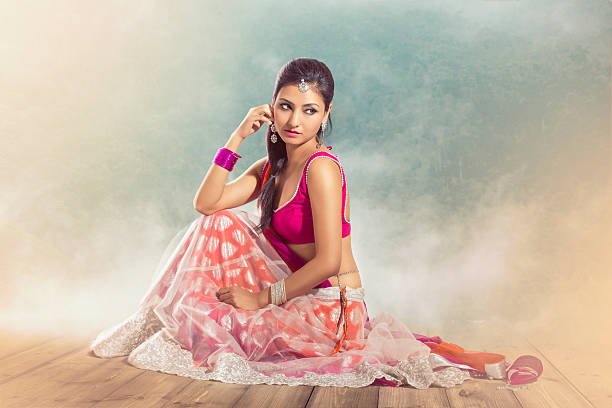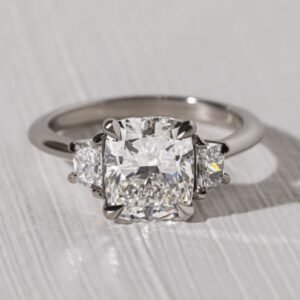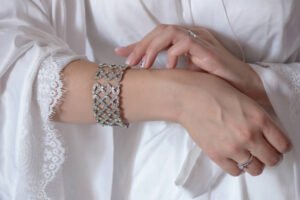Dhavani Models: A Guide to Traditional and Modern Styles

Dhavani Models
Introduction
The dhavani models have been an essential part of South Indian traditional attire for generations. Worn mostly by young girls, a dhavani (also called a half saree) represents elegance, grace, and cultural heritage. Over the years, the designs have evolved, blending tradition with modern fashion trends.
In this guide, we’ll explore various dhavani models, their significance, the latest trends, and tips on styling them to look your best.
What is a Dhavani?
A dhavani, also known as a half saree, is a traditional South Indian outfit consisting of three pieces:
- Pavadai (Skirt): A long, pleated skirt, often adorned with intricate embroidery or patterns.
- Dhavani (Drape): A dupatta-like fabric draped over the blouse, adding an elegant touch.
- Choli (Blouse): A fitted top that complements the overall look.
Traditionally, young girls wear dhavanis before transitioning to full sarees. This attire is deeply rooted in cultural practices, making it a staple for ceremonies and festivals.
Different Types of Dhavani Models
With evolving fashion trends, dhavani models have diversified into various styles. Here are some of the most popular ones:
1. Traditional Silk Dhavani
This classic style features rich Kanchipuram or Banarasi silk, adorned with zari borders and intricate patterns. It is perfect for weddings, temple visits, and cultural events.
2. Cotton Dhavani for Casual Wear
Lightweight and breathable, cotton dhavani models are ideal for everyday wear. These are simple yet elegant, available in vibrant colors and floral prints.
3. Designer Dhavani Models
Modern fashion designers have reimagined the dhavani with embellishments, mirror work, and contemporary cuts, making them suitable for parties and festive occasions.
4. Net and Georgette Dhavani
For a trendy and stylish look, net and georgette dhavanis come with heavy embroidery and sequins. They are commonly worn at receptions and high-end functions.
5. Fusion Dhavani Styles
Combining modern silhouettes with traditional elements, fusion dhavani models incorporate asymmetrical cuts, crop tops, and stylish drapes, making them a hit among younger generations.
How to Choose the Right Dhavani Model
Selecting the perfect dhavani model depends on several factors:
- Occasion: Silk and designer dhavanis are great for weddings, while cotton ones are best for casual outings.
- Body Type: Flowing fabrics like georgette suit petite frames, whereas structured silk enhances curvier body types.
- Color Selection: Bright colors like red, green, and gold are traditional, while pastel shades add a contemporary touch.
- Fabric Preference: Choose lightweight fabrics for comfort or luxurious ones for a regal look.
Styling Tips for Dhavani Models
Enhance your dhavani look with these styling tips:
- Jewelry: Pair with traditional gold or temple jewelry for an authentic touch.
- Footwear: Opt for embellished sandals or traditional juttis.
- Hair & Makeup: A simple braid with flowers or a messy bun complements the traditional look.
- Drape Style: Experiment with different ways of draping the dhavani for a unique appearance.
Where to Buy Dhavani Models?
You can find a variety of dhavani models at:
- Local silk saree stores in Tamil Nadu, Kerala, and Karnataka.
- Online marketplaces like Amazon, Flipkart, and Myntra.
- Designer boutiques specializing in traditional attire.
- Custom tailors who can create a personalized look.
Conclusion
The dhavani model remains a timeless piece of South Indian culture, blending tradition with modern elegance. Whether you prefer a classic silk dhavani or a trendy designer version, this attire is sure to make you look graceful and stylish. Choose the right model based on your preference, style it well, and carry it with confidence!
FAQs
1. What is the difference between a dhavani and a saree?
A dhavani is a three-piece outfit consisting of a skirt, blouse, and drape, whereas a saree is a single fabric worn over a blouse and petticoat.
2. At what age do girls wear dhavani?
Traditionally, girls start wearing dhavani during their teenage years, usually after puberty, before transitioning to sarees.
3. Can dhavani be worn for weddings?
Yes! Silk and designer dhavani models are perfect for weddings, engagements, and other cultural functions.
4. What are the best fabrics for dhavani?
Silk, cotton, georgette, and net are popular choices, depending on the occasion and comfort level.
5. How to maintain silk dhavani models?
Store them in a dry place, use a muslin cloth cover, and dry clean them regularly to maintain their luster.
By following these tips and choosing the right dhavani model, you can embrace the beauty of this traditional outfit with a modern twist. Happy styling!






